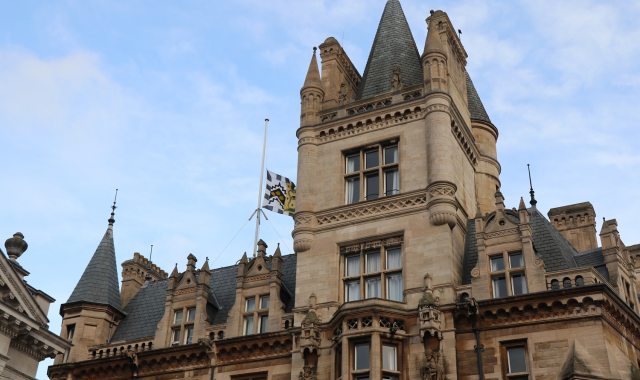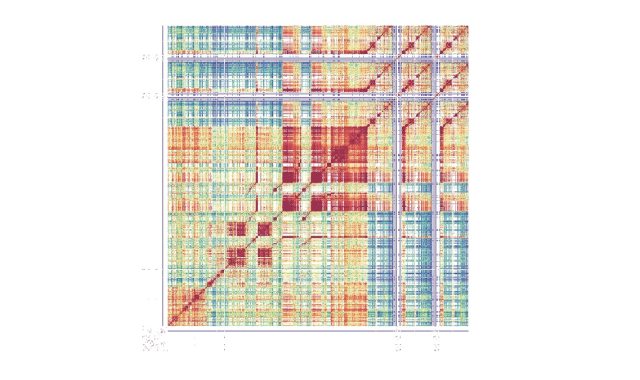Flights of fancy: John Clare and the art of birdwatching
- 30 August 2017
- 3 minutes
From the distinctive “scribbled” marks on yellowhammers’ eggs to the hair and thistledown packed within a nest, the precise beauty of birds and their habitats preoccupied the nineteenth century poet John Clare.
Now literary scholars, ornithologists, nature writers and artists are to come together to apply the same close scrutiny to Clare’s work, exploring what it means to observe and record birds.
Clare the bird watcher will in turn be watched at a symposium co-organised by Caius English Fellow Dr Sarah Houghton-Walker, one of the directors of the Centre for John Clare Studies at Cambridge.
The event, being held on 15 September 2017 at the David Attenborough Building, Cambridge, is a collaboration between the Centre and the Cambridge Conservation Initiative.
Clare (1793-1864), remembered on his gravestone as the ‘peasant poet’, was a keen and skilful natural historian whose various labouring jobs in farms and gardens saw him immersed in the natural world. His observation of birds – as well as plants and animals – in his native Northamptonshire was remarkable in its detail: he wrote about 147 species of British wild birds with none of the technical equipment a birdwatcher might employ today.
The symposium, titled John Clare and the Art of Bird Watching, will consider how the poet looked and watched, and how he translated his observations into words, while also examining how today’s artists and writers respond to his work.
“The idea is to raise questions about the act of bird watching, recording, understanding and classification, both in the early 19th century and the present day, dwelling in particular on the importance of localism and the distinctiveness of Clare’s environment and voice to his writing about birds,” says Houghton-Walker.
Academics speaking at the symposium include Dr Francesca MacKenney (Bristol), Dr Mina Gorji (Cambridge) and Dr Jos Smith (University of East Anglia). Participants will also hear from printmaker Carry Akroyd, textile artist Anita Bruce, and nature writers Alex Preston and Derek Niemann.
Poets have long been drawn to the subject of birds – the gannet and curlew are symbols of solitude in the Anglo-Saxon poem The Seafarer, while Chaucer’s Parlement of Foules sees Nature convene a parliament at which the (bickering) birds all choose their mates. Gerard Manley Hopkins’ Windhover and Ted Hughes’ Hawk in the Rain are among flocks of birds swooping through later English poetry.
Clare, however, is remarkable for his highly detailed, naturalist’s eye. The yellowhammer, he writes in Shadows of Taste, “like a tasteful guest
Neath picturesque green molehills makes a nest
Where oft the shepherd with unlearned ken
Finds strange eggs scribbled as with ink and pen
He looks with wonder on the learned marks
And calls them in his memory writing larks” (ll. 9-14)
“He’s intensely interested in habitat, behaviour and song, but also, increasingly, in the threats to birds from his fellow men," says Houghton-Walker. He insists on a vital accuracy in his descriptions which continue to astonish scientific natural historians, and yet produces poetry about birds which can claim to be some of the very best in the language.
“Clare’s greatest achievement is the conjunction of scientific accuracy with what he calls ‘poetic feeling’. He possesses a depth of knowledge only achievable by painstaking observation of birds’ behaviour as it changes with the seasons. He scorns those poets who don’t take the time to watch and merely recycle (often inaccurate) poetic conventions.
“His patient observation is rewarded with an intimate knowledge which is exhibited throughout his prose and poetry. He’s especially fascinated by nests – something that has been discussed by many critics.”
To illustrate some of the wonders of birds and their behaviour, the symposium will include a screening of Murmuration X 10, a short film by filmmaker Sarah Wood and Helen Macdonald, author of H is for Hawk, and a guided tour of the avian collection at the Museum of Zoology.


